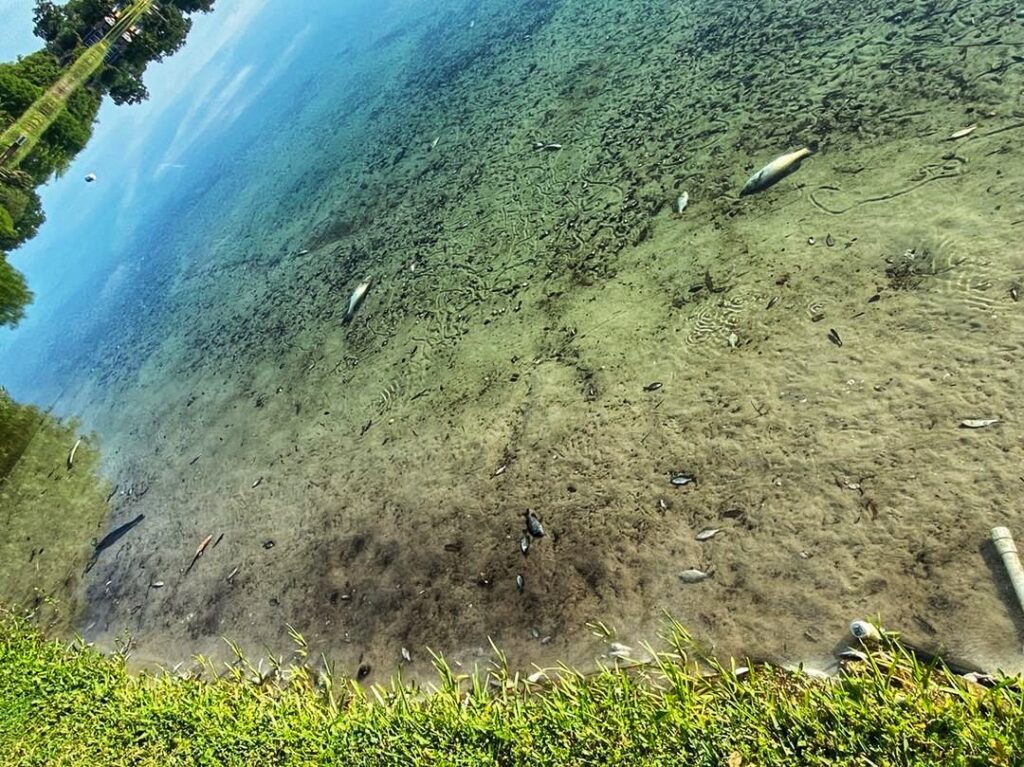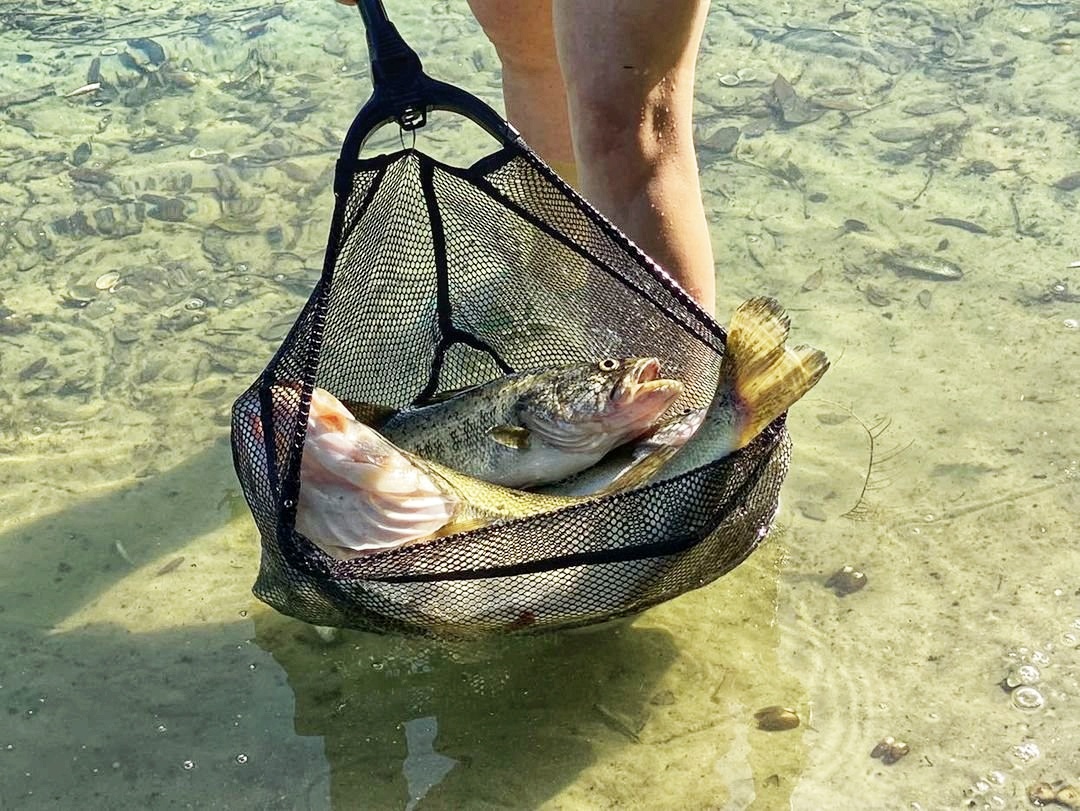“Did you hear about the massive fish kill by the city in Lake Giles? They added alum and threw off the ph so all these fish died. They were out there cleaning up hundreds maybe thousands of fish off the top of the water yesterday and continue today.”
– BENJAMIN GARRETT
Lake Giles, a smaller waterbody in the residential neighborhood of Dover Shores West, was recently treated with aluminum sulfate, to help reduce excess nutrients linked to algae blooms. That treatment, which is generally regarded as harmless to aquatic life if used correctly, resulted in a mass killing of fish in the lake.
Alum is generally regarded as a non-toxic material and is commonly used to clarify drinking water and is also used to reduce the amount of phosphorous in lakes. When applied to water, alum swells and forms a sticky and heavy particulate called “floc” (short for “flocculation”) that attracts phosphorous to it like a magnet and then settles to the lake bottom and impedes the release of phosphorus into the water (unless disturbed down the line). The floc on the bottom of the lake will allegedly continue to attract phosphorous in the lake for years as well, which helps to impede future algae blooms – which can be toxic to people and pets and allows for native plant life` to re-establish itself on the lake floor with increased access to sunshine.
When applying alum, it’s recommended that the water’s pH, or level of acidity, be between 6.5 and 8.2, as mixing it with more acidic water can be toxic to fish. The powdered chemical is also known to sometimes clog the gills of fish and lead to suffocation.
The treatment of water bodies with alum, while showing immediate progress in the sequestering of phosphorous, doesn’t aid in stopping new sources of phosphorous from polluting waterways and should be used in concert with policies that keep extra nutrients from flowing into lakes and rivers.
Other treatment methods like the application of iron substitutes do exist, but natural and nature-based solutions for permanently removing the excess phosphorous from the water should be favored, which can be done by increasing native, water-filtering biomass around the peripheries of local water bodies.
We reached out to the City of Orlando to see what was up and the City’s Public Information Officer, Samantha Holsten, shared the following update.
“In an effort to improve water quality, the City’s Streets and Stormwater Division contracted Environmental Research & Design, Inc. (ERD) to conduct tests and implement a plan to reduce nutrients in the water column by treating Lake Giles with aluminum sulfate (alum).
On Monday, May 2, 2022, ERD applied alum to Lake Giles which unfortunately resulted in a fish kill. The city is working with ERD to identify possible causes and to ensure this does not happen again.
City of Orlando staff are out assisting ERD with the cleanup. All treatment operations are halted until further notice.”
– SAMANTHA HOLSTEN, PUBLIC INFORMATION OFFICER, CITY OF ORLANDO




